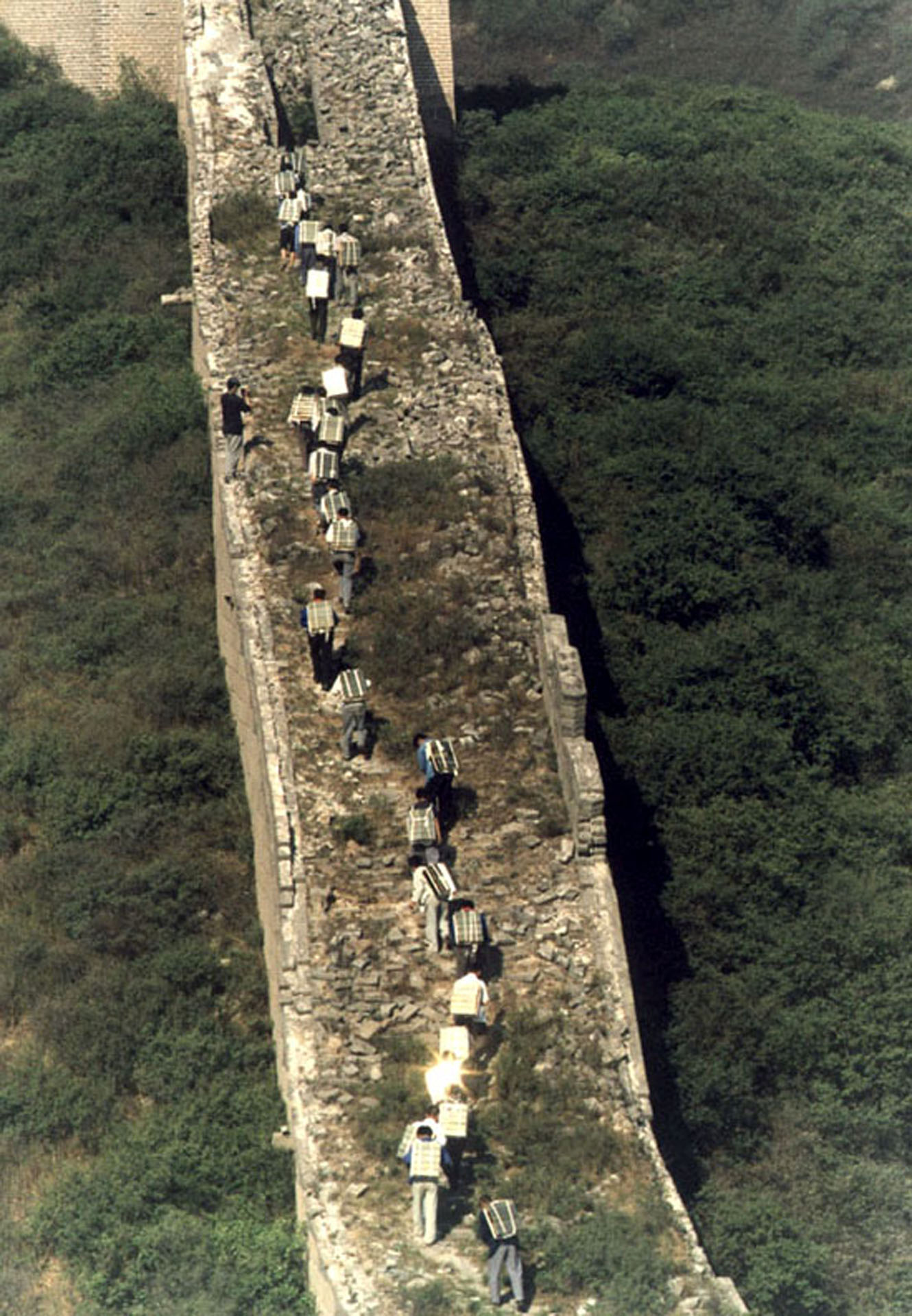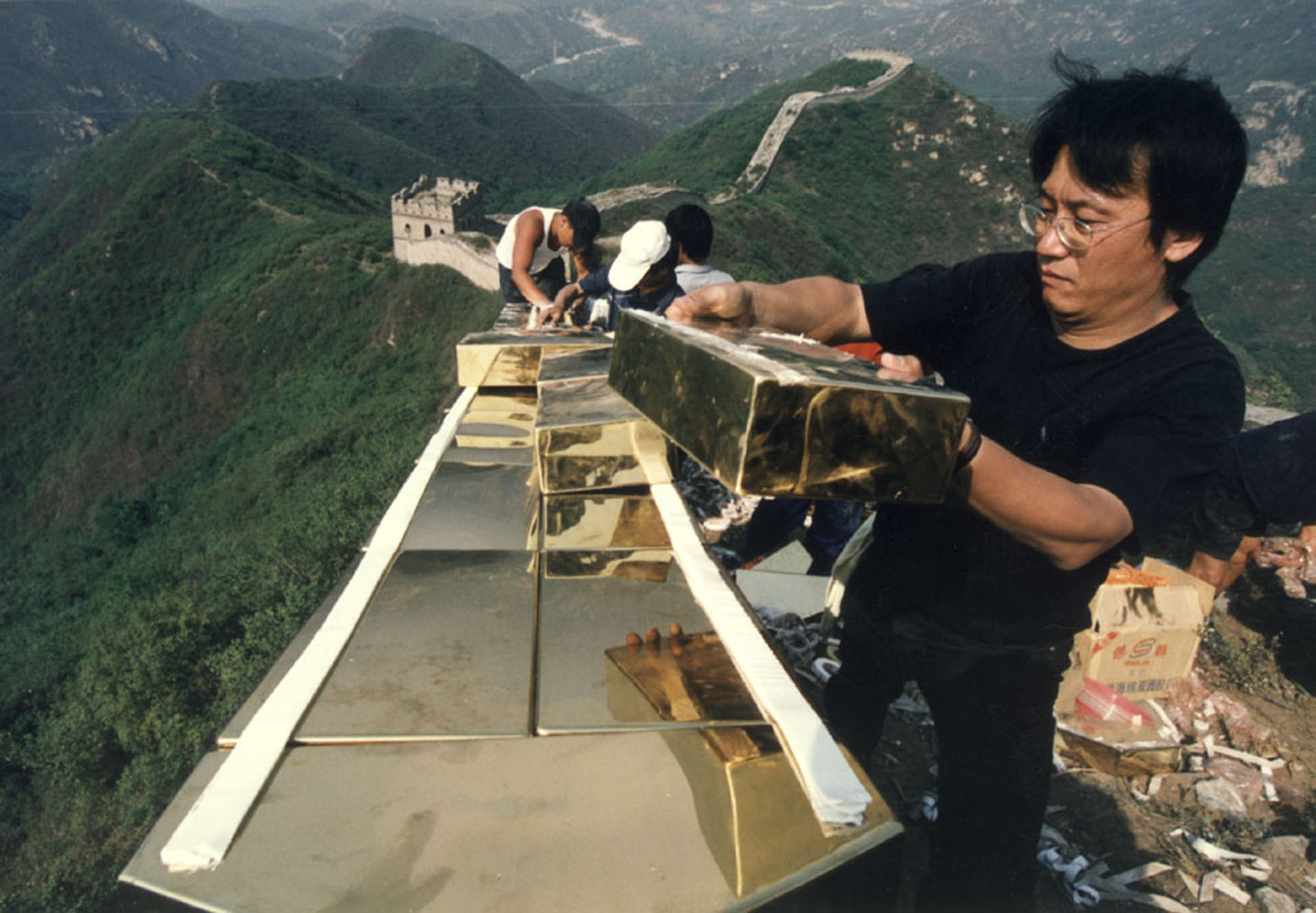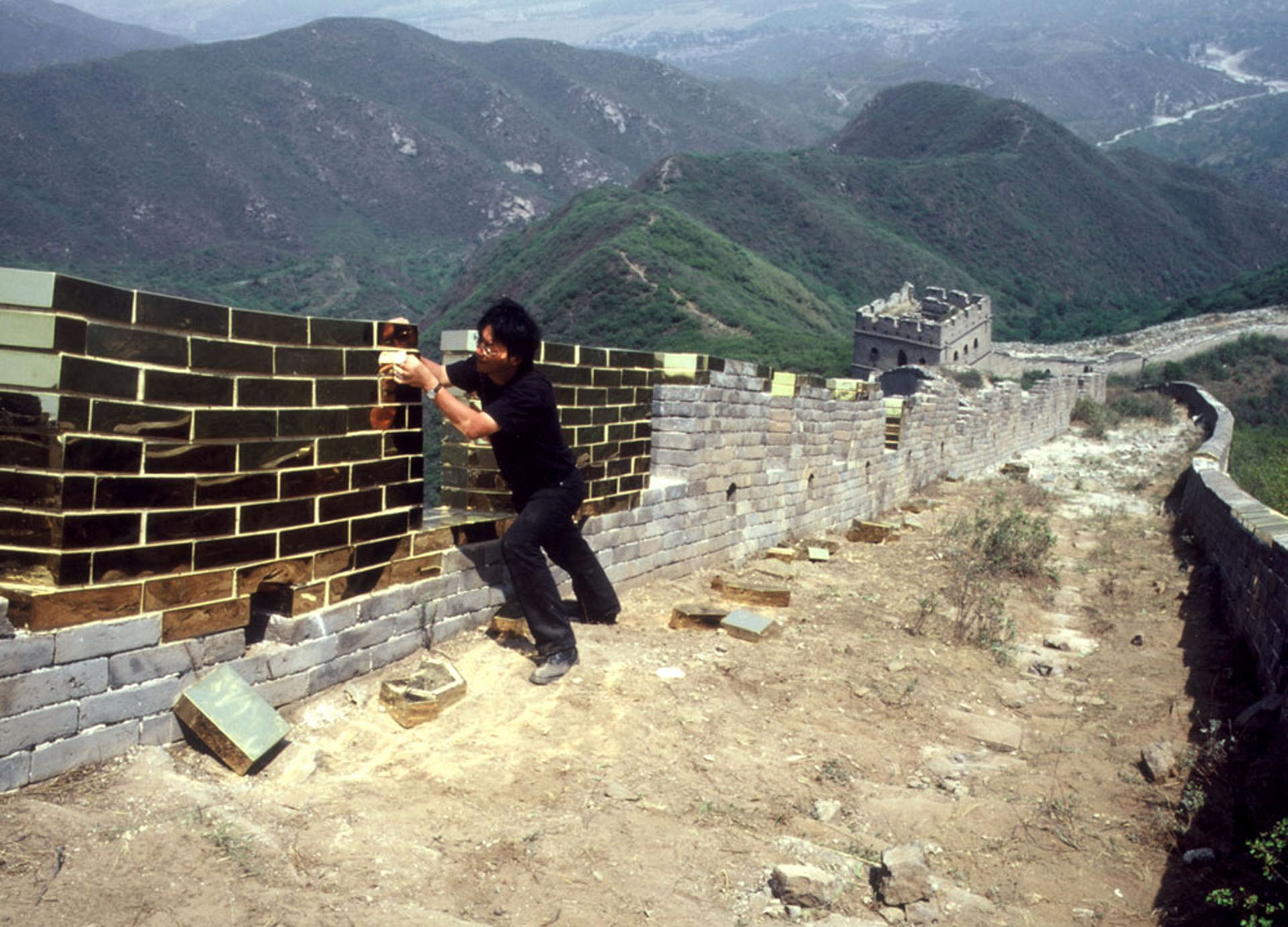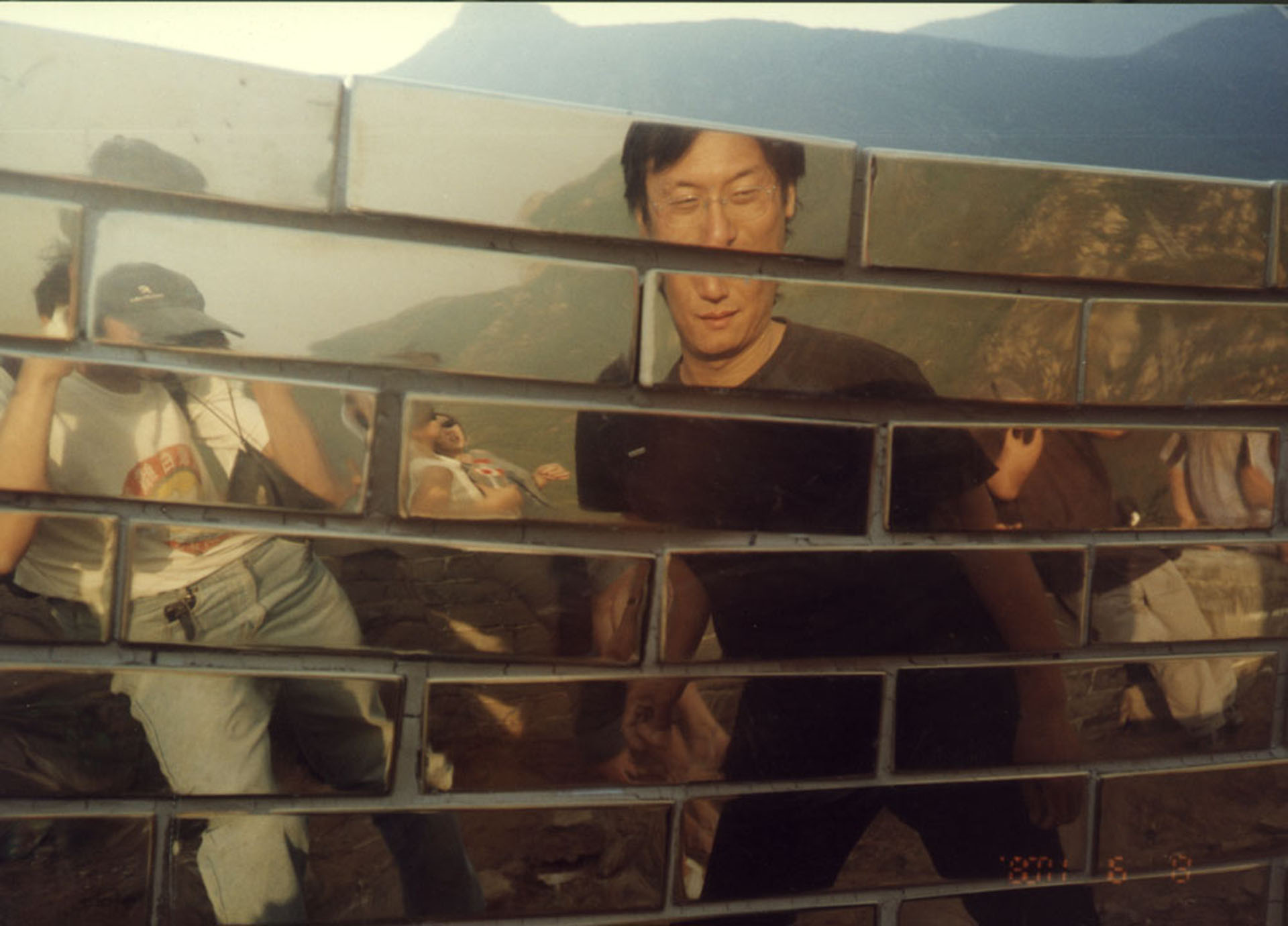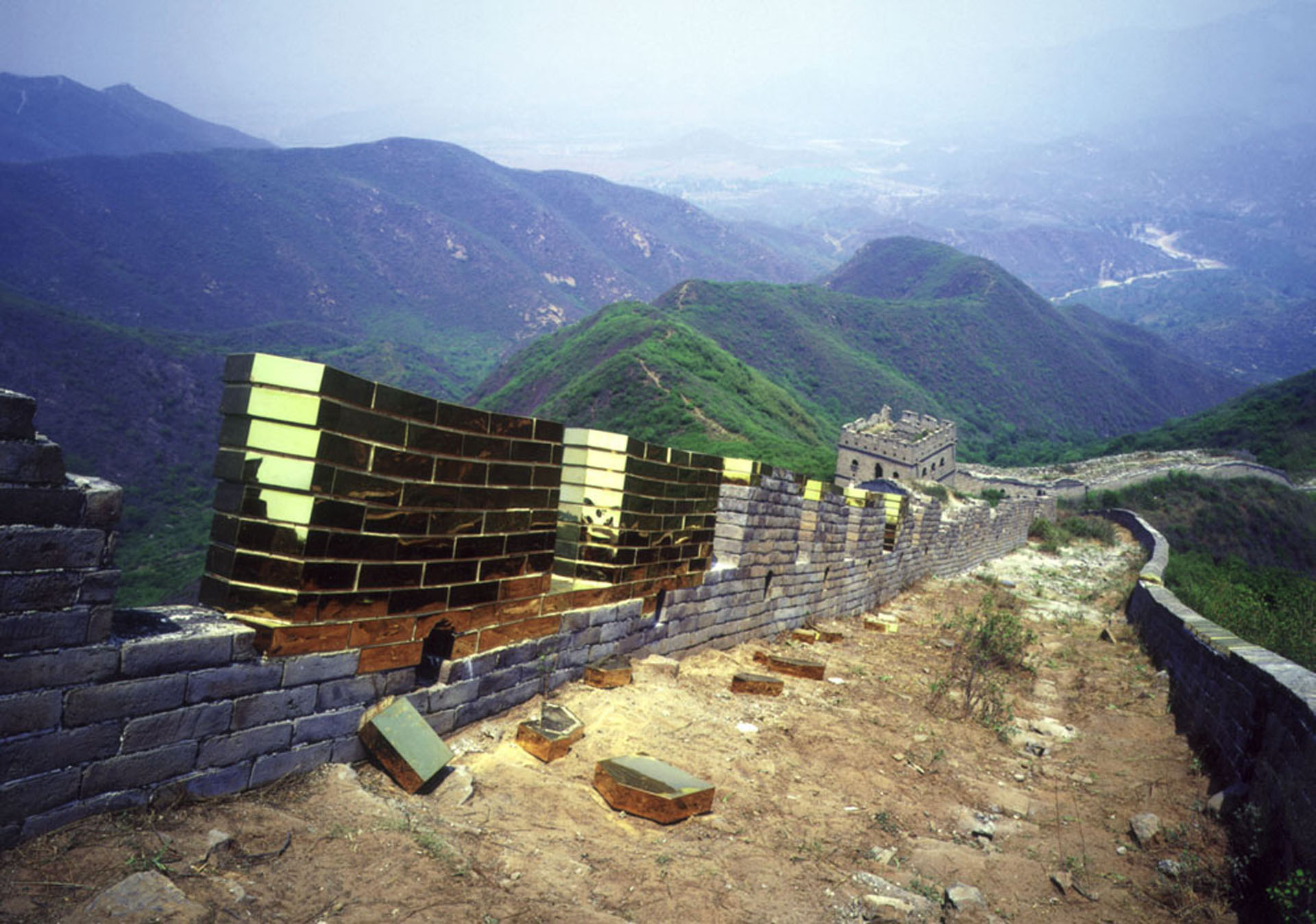13
Inlay Great Wall
Fixing the Great Wall 2001
In the past, when people’s teeth had decayed and fell out, they liked to use gold teeth to replace them. Firstly, gold is more flexible than other materials, so it’s suitable for chewing; secondly, it represents wealth; but what’s most important is that it represents a person’s identity, because gold stands as a metaphor for respect. Gold teeth are mainly a status symbol used to show off, so it happens that many noveaux riches decide to get gold teeth even if their teeth are still healthy. A short novel described this: ‘When that wealthy man smiled, he showed a mouthful of gold teeth.’
I don’t know why, but the Great Wall has become the spiritual symbol of China, so people don’t care anymore if its original meaning was reasonable and fitted people’s needs. I combined these two symbolic elements together and the issue I put forth is directed towards the dream of a whole nation.
The process of inlaying gold teeth was similar to that of repairing the Great Wall. At first the workers I hired carried golden bricks on their back and reached the Great Wall, and then an assistant laid the golden bricks where parts and bricks of the Great Wall were missing in order to restore the Wall. The shining golden bricks inlaid on the Wall could be seen from far away, and they looked like big gold teeth.
After much research work, I decided to fix the west remnants of the Great Wall by Badaling. After visiting the places located in two mountains, I found out that in this area, a portion of 20 meters of the Great Wall was missing and was set just between two well preserved parts. After taking the precise measures, I figured out that more than 250 bricks would be employed to fix this remnant; the bricks would be polished and plated with gold. This kind of material is durable, impressive, cheap and even if I didn’t employ real gold, the effect was the same of employing real gold.
Zhan Wang
2001

